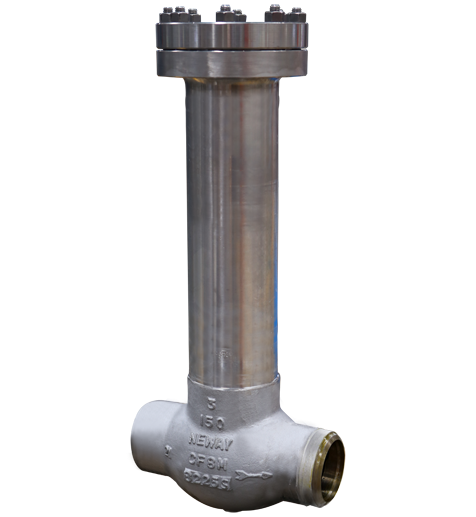When dealing with liquid hydrogen, the importance of reliable and durable valves cannot be overstated. As liquid hydrogen is a cryogenic substance with extremely low temperatures, the components used in valves must be designed and manufactured with materials that can withstand harsh conditions without compromising performance. One company that understands this need is Neway Valve, a trusted brand in the industry, known for its liquid hydrogen valves and liquid hydrogen check valves.
Why Specialized Materials Are Crucial for Liquid Hydrogen Valves
The characteristics of liquid hydrogen, especially its ultra-low temperature, make it prone to rapid vaporization when exposed to heat. This is why the materials used in valves must be resistant to extreme temperatures, ensuring no leakage or failure. Valves designed for liquid hydrogen typically use metals like stainless steel or cryogenic alloys, which retain their strength even in freezing conditions. The specialized construction, especially for liquid hydrogen check valves, ensures the system remains secure and operational under these demanding conditions.
The Role of Neway Valve’s Liquid Hydrogen Valves in Safety and Performance
One of the key players in producing high-performance liquid hydrogen valves is Neway Valve. The brand’s valves are designed with a vacuum-jacketed construction to prevent any heat ingress that could lead to vaporization. The liquid hydrogen check valve from Neway is built with a guided disc and spring-return mechanism, ensuring a jam-free closure and a secure shut-off, even in extreme environments. These thoughtful design features help prevent any accidental discharge of liquid hydrogen, ensuring safety and reliability in critical applications.
Ensuring Longevity and Efficiency with Advanced Valve Construction
The extended valve body design found in Neway Valve products is specifically engineered to prevent heat from entering the valve, which could cause serious complications in handling liquid hydrogen. The vacuum-jacketed construction ensures that external temperatures do not affect the valve’s performance. Additionally, the inclusion of PCTFE (polychlorotrifluoroethylene) in the valve stem minimizes vaporization space, contributing to both the valve’s efficiency and longevity. These advanced features help reduce energy loss, enhance performance, and prevent operational risks associated with cryogenic gases.
Conclusion
In the realm of cryogenics, the design and material choices for liquid hydrogen valves are crucial to maintaining safety and performance. Neway Valve has taken into account the unique challenges posed by liquid hydrogen through innovative design and careful material selection. The use of specialized materials, such as the vacuum-jacketed body and PCTFE-enhanced stem, ensures that liquid hydrogen check valves can perform reliably in some of the harshest conditions. By using high-quality valves, businesses can mitigate risks, extend valve lifespan, and increase overall system efficiency.
